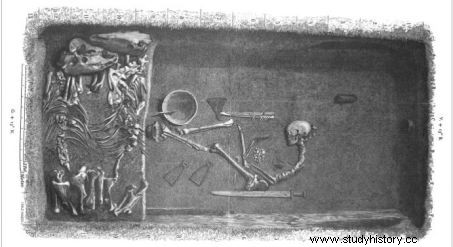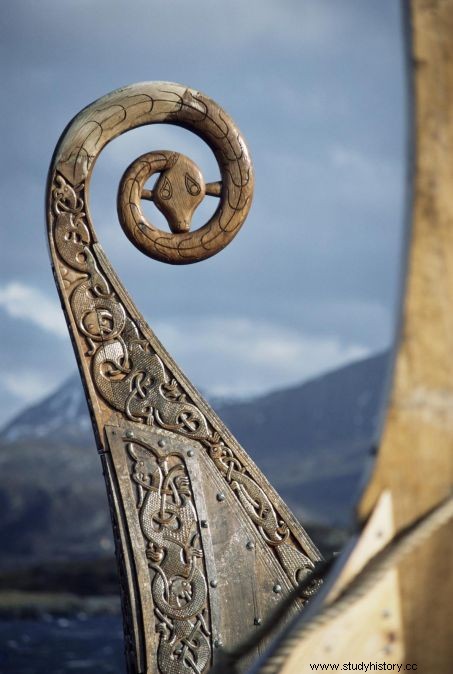The identification of a prestigious Viking warrior through genetic analysis offers new insight into this society. Conclusions that should lead to more caution in generalizing about the social organization of past societies.

Warrior from the "Viking" series, illustrating the combat role that certain Viking women had between the 8th and 10th centuries.
Skajlmö. This is how women armed with shields were designated in Nordic myths, like the Valkyries accompanying the souls of warriors to Valhalla, the kingdom of the dead... Now here is that the existence of these women warriors of high rank, long stored in the radius of the legends, has just been proven by DNA analyzes carried out by researchers from the University of Uppsala and the University of Stockholm (Sweden) in the journal American Journal of Physical Anthropology ! These are human remains from the Birka tomb, one of the most famous Viking burials of the 10th th century discovered at the end of the 19 th century on the island of Björkö, near Lake Mälar, west of Stockholm, which led to this discovery.

Illustration by Evald Hansen of the original plan of Birka's tomb, excavated in the late 19th century, Sweden.
A prestigious warrior in his thirties had indeed been exhumed there in 1880, surrounded by his rich armament:sword, knife, spear, arrows, shields and horses (a mare and a stallion). A brave fighter who now turns out to be a woman. "This is the first formal confirmation by genetics of the existence of female Viking warriors , enthuses Matthias Jakobsson, head of the Department of Biology at Uppsala University in the online journal Phys.Org . "Certainly some women buried with weapons had been found before but never with equipment of this tier, explains in this same article Charlotte Hedenstiema-Jonson of the University of Stockholm, responsible for the study. The specialists of this company have always been rather reluctant to recognize their existence”.
It is this reluctance that is at the origin of these DNA analyses. A first osteological examination of the skeleton, carried out in the 1970s, had indeed already concluded that it was indeed a woman… but the results had then been very controversial. To respond to these criticisms, a DNA sample was taken from a “thin and slender humerus (arm bone) », and on teeth. Results:Obtaining two X chromosomes and no Y chromosomes! And the analyzes provided other valuable details. "Strontium isotope values found suggest that this young woman moved during her childhood:the changes found between when the first molar finished forming around age 4 and when the second molar emerged around the age of 9, she migrated to Birka from an unknown region, says the study. It shows a genetic affinity with the current inhabitants of the British Isles (England and Scotland), the North Atlantic Islands (Iceland and the Orkneys), Scandinavia (Denmark and Norway) and, to a lesser extent , Eastern Europe (Lithuania and Latvia). »

Viking ship prow. © David Lomax/Robert Harding Premium/AFP
The discovery of Charlotte Hedenstiema-Jonson and her colleagues opens the way to a better understanding of the Vikings, always presented as a patriarchal society. "This data suggest that women may have been full members of male-dominated spheres ", continue the authors. Birka, classified as a World Heritage Site, was an important commercial establishment of the VIII th at the X th century, where amber, wax, furs, slaves and iron were exchanged, in particular thanks to an economic network and links with the Caliphate and the Byzantine Empire, the East where the Vikings had adventurous, attracted by silver, a precious metal of which they were fond. Of the 3,000 graves excavated at Birka since the 19 th century, only a thousand have been explored. Régis Boyer, a French specialist in Vikings and Scandinavian civilizations at the University of Paris-Sorbonne, who died in June 2017, raised a hypothesis to explain Birka's economic decline:the sharp decline in Arab money, which the Vikings had until there imported by hundreds of thousands of pieces.
